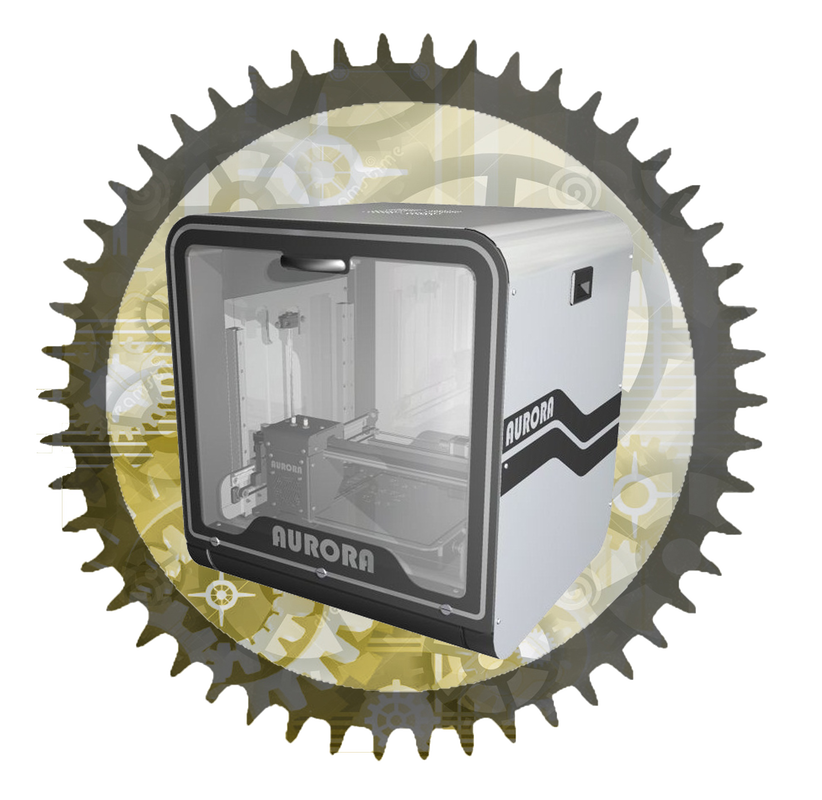"AURORA" 3D Mono Colored Printer:
"AURORA" 3D MONO COLORED PRINTER:CAD software used: Autodesk Inventor 2018.
Download Scope: 3D CAD model (Autodesk Inventor files), STEP. Price: 25$
The "AURORA" machine is a mono-colored 3D printer that has been designed using one of the addictive manufacturing techniques for the rapid prototyping process. This technique is known as Fused Deposition Modeling (FDM).
First, like all 3D printer machines, the CAD file of the part that is to be printed to a 3D object is exported with the STL extension. This extension allows the 3D printer program to view the part as accumulative geometric surfaces, similar to the surfaces resulting from Finite Element Analysis (FEA). Using the 3D printer program, the part can be converted into many tiny slices, which are then sent in a successive method to the 3D printer machine so that the part can be built slice by slice until the full 3D built part is obtained at the end of the process. As a result, this built part and the modeled part in the CAD program will be identical. For the purpose of building the implement, this technique relies on melting a thermal polymer that pours after positional melting from the actuator head nozzle. The actuator head traces the cross-section of the processed slice and builds according to it until the full completely of the slice section. The procedure is repeated many times to complete the part building. This technique uses another thermal polymer as a supporting material to fill all part gaps and to support the built part body in case of balance adjusting during the building process. After the building is complete, the support material is removed, leaving only the built part or product. In this printer, the thermal polymer Acrylonitrile Butadiene Styrene (ABS) is used. This plastic polymer melts at a Celsius degree between 180-220 degrees and is provided in the markets as a filament coiled around a roll, with a diameter of 1.75mm. ABS filament substance comes in a variety of colors. Regarding the supporting material, the thermal polymer Polyvinyl Acetate (PVA) is used. This plastic polymer melts at a Celsius degree between 180-220 degrees and is provided in the markets as a filament coiled around a roll, with a diameter of 1.75mm. It is often found in white. An important specification of this material is its ability to dissolve in water. Therefore, after building the part, it is enough to submerge it in water, and the supporting material will dissolve while the building material remains. Both the building and supporting materials are provided to the actuator head nozzle by means of a feeding mechanism. This mechanism consists of a feeder for pulling in the plastic filament from the roll and guiding it into a canal ended with the melting chamber, which is in contact with a ceramic heater (40 watts). The material is then melted and poured out through the nozzle, which has an orifice with a diameter of 0.5mm. The feeding mechanism includes a cooler made from aluminum to prevent heat from transferring to the top. The machine has two actuator heads and feeders (one for building and the other for supporting). The heat exchange for the two coolers can be done using a fan in front of the actuator heads. The feeders are run by stepper motors, one for each. Regarding the Mechanical Design Side, this machine has three axes (X,Y,Z). It depends on a motion method consisting of a stepper motor and high accuracy synchronous pulleys and belt for moving the actuator head along the (Y) axis, which represents the machine gantry. The motion of the axis (Y) horizontally along the axis (X) is also achieved by means of a stepper motor and high accuracy synchronous pulleys and belt. The motion along the (Z) axis upward or backward using a pair of stepper ballscrews is based on the motion of the assembly of (X and Y) axes. Guiding mechanisms are used in all axes, consisting of either cylindrical or prismatic linear guides. These linear guides do not need to be lubricated like the traditional ones. The work volume or field for this machine is (30cm × 30cm × 30cm), with (1.5cm) added to each axis as a margin. Regarding the Dynamic Analysis, the inertia forces and torques were studied to determine the maximum and minimum velocity required to move the actuator head. Consequently, stepper motors were chosen, with the number of them equal to the number of axes. These motors rotate (0.9 degrees) by each pulse they get, and they are characterized by high accuracy. The value of rotation is taken into consideration to determine the printer accuracy. The load torque for each motor is (4.4 Kg.cm). The building speed according to the (Y) axis is a maximum of (150 mm/s). On the other hand, the motion according to the (X) and (Z) axes is done by pulses. The motion accuracy for the (X) and (Y) axes is (30 microns), and the maximum accuracy in this 3D printer machine for the thickness of each layer is (20 microns). |
|
